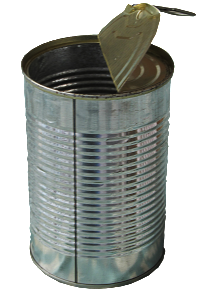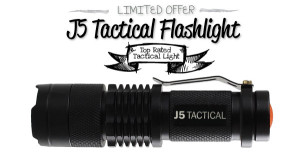In my last article we learned that bushcraft and survival skills have a lot to do with the ability to improvise. Items that we would not even give a second thought to under normal circumstances and would in all likelihood be discarded as rubbish can become valuable and even lifesaving commodities in a survival situation. Take a tin can for example. We usually open a tin can, empty out the contents, throw away the lid and the empty can. But a tin can can have umpteen uses in a survival situation and should never be thrown away.
One wonders how often it must have occurred in the past where people have become lost on a hike in the mountains or in the bush while hunting and have had a tin can of food with them and at some point have opened the can, eaten the contents and then thrown the can away (or hopefully at least, buried it).
Perhaps they have been stranded or lost in the wild and walked past an empty can without seeing its potential. In the modern world rubbish can be found in even the most remote places on earth and rubbish can become like a treasure trove of useful implements when you have little or nothing to begin with.
So let’s take a look at the humble tin can from a survival perspective and look at some of the uses it can be put to.
Survival Uses for a Tin Can
Carrying container made from a tin can
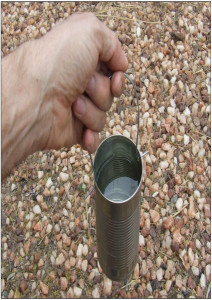
The most obvious use is what it was designed for – to be a container. You can carry virtually anything in a tin can – water, food, sand, small implements and so on. Wire is also found in most places, and by punching two small holes in the side of the can with a pocket knife, piece of glass, sharp stone, piece of metal or a nail you can attach a wire handle to make a useful carrying container.
A safe way to lift a hot tin can
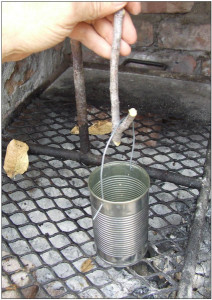
Figure-2-Cooking-pot-212×300 This container can also be used as a cup or as a small cooking pot. The ability to be able to boil water is of cardinal survival importance and a tin can makes it possible for you to boil water to purify it and make it safe to drink. You can also use the tin can as a pot to cook food in, prepare medicinal potions, make hot drinks or sterilize instruments. When heating contents in the tin can over an open fire, take care not to burn yourself when lifting it. Use a piece of cloth or a small branch to lift the hot tin by the wire handle.
Using a tin can as a stove
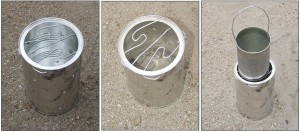
The can itself can be used as a stove. This method is especially useful where there is not much firewood or combustible plant material. It was used by soldiers in the North African desert during the Second World War and was known as a Benghazi stove. Fill the can about half full with sand and then add some petrol to the sand to wet it. Get the stove burning by lighting some tinder on the top. It will burn for about five minutes – long enough to boil water or fry an egg (you will find eggs in bird nests if you take the trouble to look).
A trap made by burying a tin can
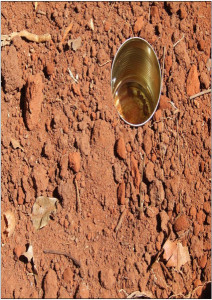
You will need food at some stage and a tin can can be made into a useful trap. By burying it in the ground so that the top of the can is at the same level as the ground, you will have made a pit trap in which small crawling insects, frogs and even small mammals such as mice can fall into and be eaten or used as bait to catch fish. Add a little water at the bottom of the tin to drown whatever falls into it.
Using a tin can as a distress signal
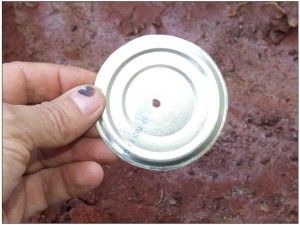
Being able to signal for help can be life-saving, and this is where the lid can be useful. Using some sharp object or tool, punch a small hole into the center of the lid – you now have a heliograph or signaling mirror. Make sure one side of the lid is polished as smooth and bright as you can get it to have a good reflective surface (see figure 5). You can now signal to vehicles, search parties or low flying aircraft by aiming the mirror towards the persons you wish to signal to and reflecting the bright rays of sunlight towards them. You aim the mirror by looking through the center hole towards the person, vehicle or aircraft you wish to signal to.
Use a tin can as a makeshift cutting tool
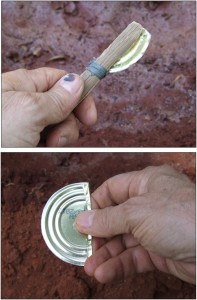
Because the tin is made of metal you can make cutting tools from the material. The edges of the lid can be sharpened to fashion a sharp cutting tool. It can be partially bent over to create a blunt end to hold onto without fear of cutting yourself or mounted in a piece of wood.
Make arrowheads out of pieces of tin
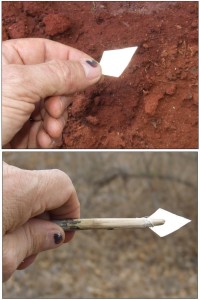
Arrowheads can be fashioned from pieces of tin . If you don’t have anything to cut the tin with, it can be bent back and forth to break pieces off until the desired shape is acquired.
A tin can can be used as a water filter or shower head
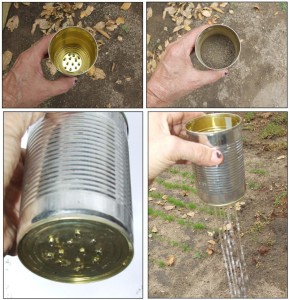
By punching a few small holes in the bottom of the tin and adding layers of gravel and sand, you can make an effective water filter. This will remove particulate matter before boiling, making the water more palatable. It can also serve as a shower by punching some holes in the bottom .
A fishing lure made from tin
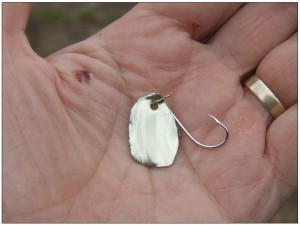
Small, reflective pieces of tin can be used as fishing lures and spoons. These can be attached to fishhooks from your survival kit if you have one, or from hooks fabricated from lengths of wire or even thorns.
A tin can candle lamp
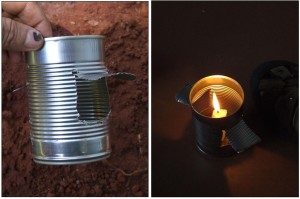
In windy conditions it might be difficult to keep a candle burning. This problem can be solved by making a small candle lamp as shown in
A tin can fire carrier
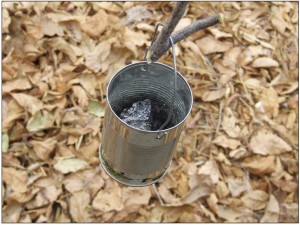
A tin can makes a wonderful fire carrier. Make a few holes in the bottom and side of the can, then place glowing coals or smoldering dung (cow, buffalo, elephant and rhino dung works well) in the can. The coals or dung will continue burning slowly for many hours and then when you need to make fire you will already have glowing coals to start with. This is especially useful if you have run out of matches or your lighter is empty.
These are just a few of many possibilities. Use your imagination and you will discover many more.
By Cleve Cheney
survivallife
